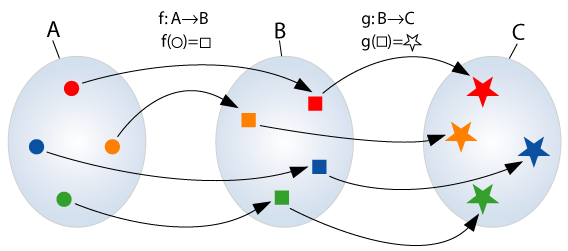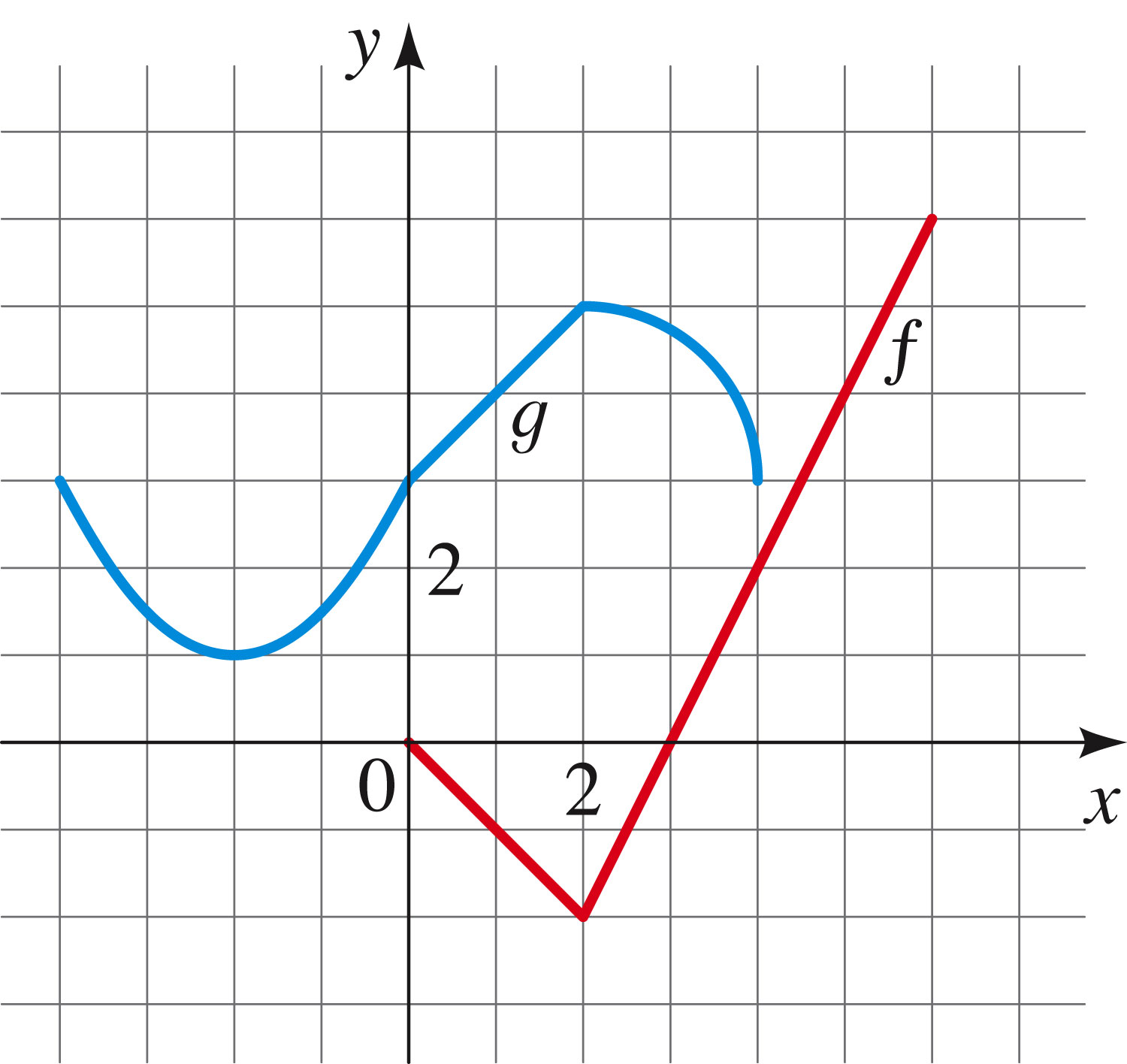We can also subtract them, multiply them, and divide them. So the usual algebraic manipulations allow us to create new functions from old.
A somewhat more complicated operation is that of function composition, in which two (or more) functions are applied sequentially. An example is the function
from above. First the polynomial function operates on x, and the square root function then operates on the result. Pictorially we might write this as
\[ x {\rightarrow} 1+x^2 {\rightarrow} \sqrt{1+{x^2}} \]

Note: we could consider this as a composition of even more functions:
Now, what did each function -- represented by the long arrows -- do? Each transforms whatever it receives (starting from x) into something that it hands along to the next function:
Notice how we use different names for the independent and dependent variables. This is like using the different symbols used in the image above (circle, square, star).
Then the function
In fact, the transformations we've already considered are examples of compositions:
| Vertical shift up by c: | ${x} \rightarrow {f({x})} \rightarrow {f({x})}+c$ |
| Horizontal shift right by c: | ${x} \rightarrow {x-c} \rightarrow f({x-c})$ |
| Reflection over the x-axis: | $x \rightarrow f(x) \rightarrow {-f({x})}$ |
| Reflection over the y-axis: | $x \rightarrow -x \rightarrow f(-x)$ |
| Vertical stretch by a factor $a$: | $x \rightarrow f(x) \rightarrow {a*f(x)}$ |
| Horizontal stretch by a factor $a$: | $x \rightarrow a*x \rightarrow {f(a*x)}$ |
Some exercises to try: pp. 196-, #5, 15, 21, 35, 41, 45, 49, 63
For exercises #27-32:
